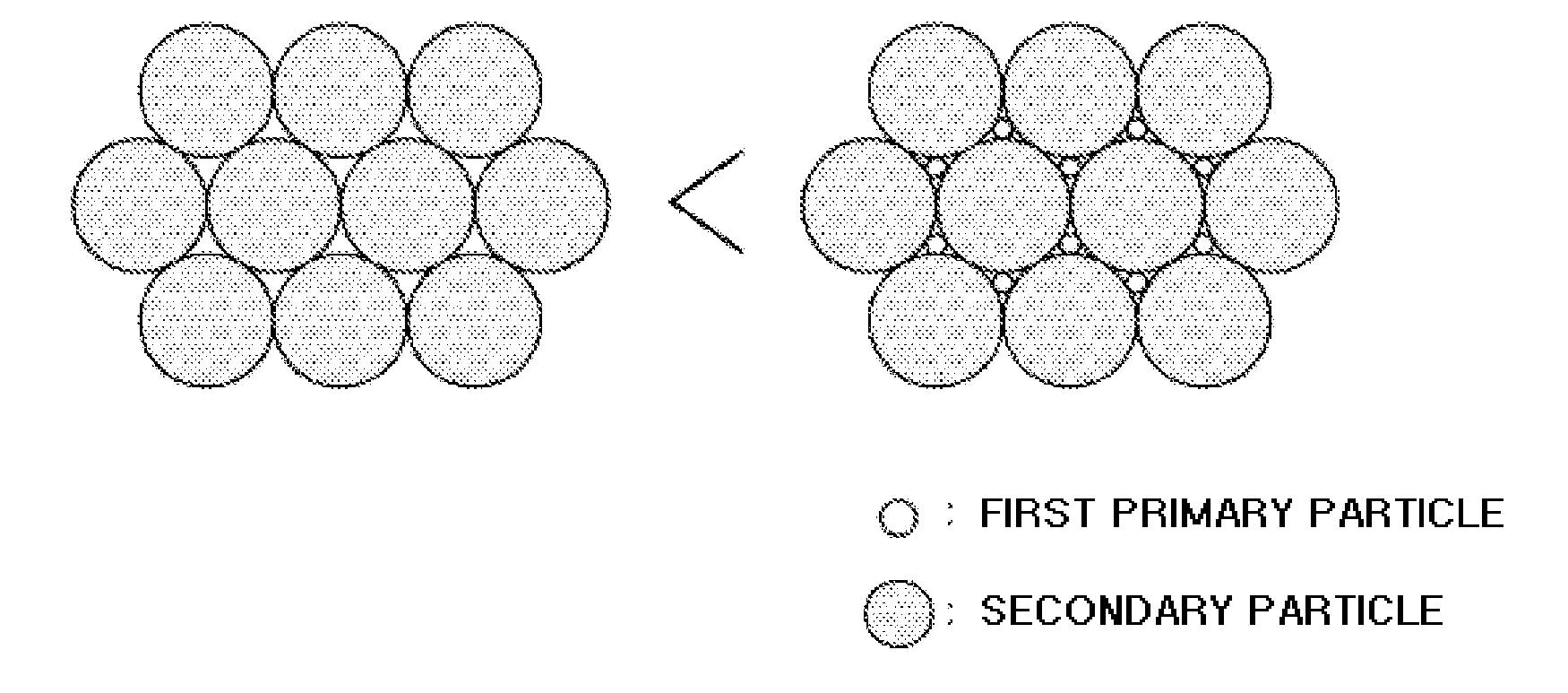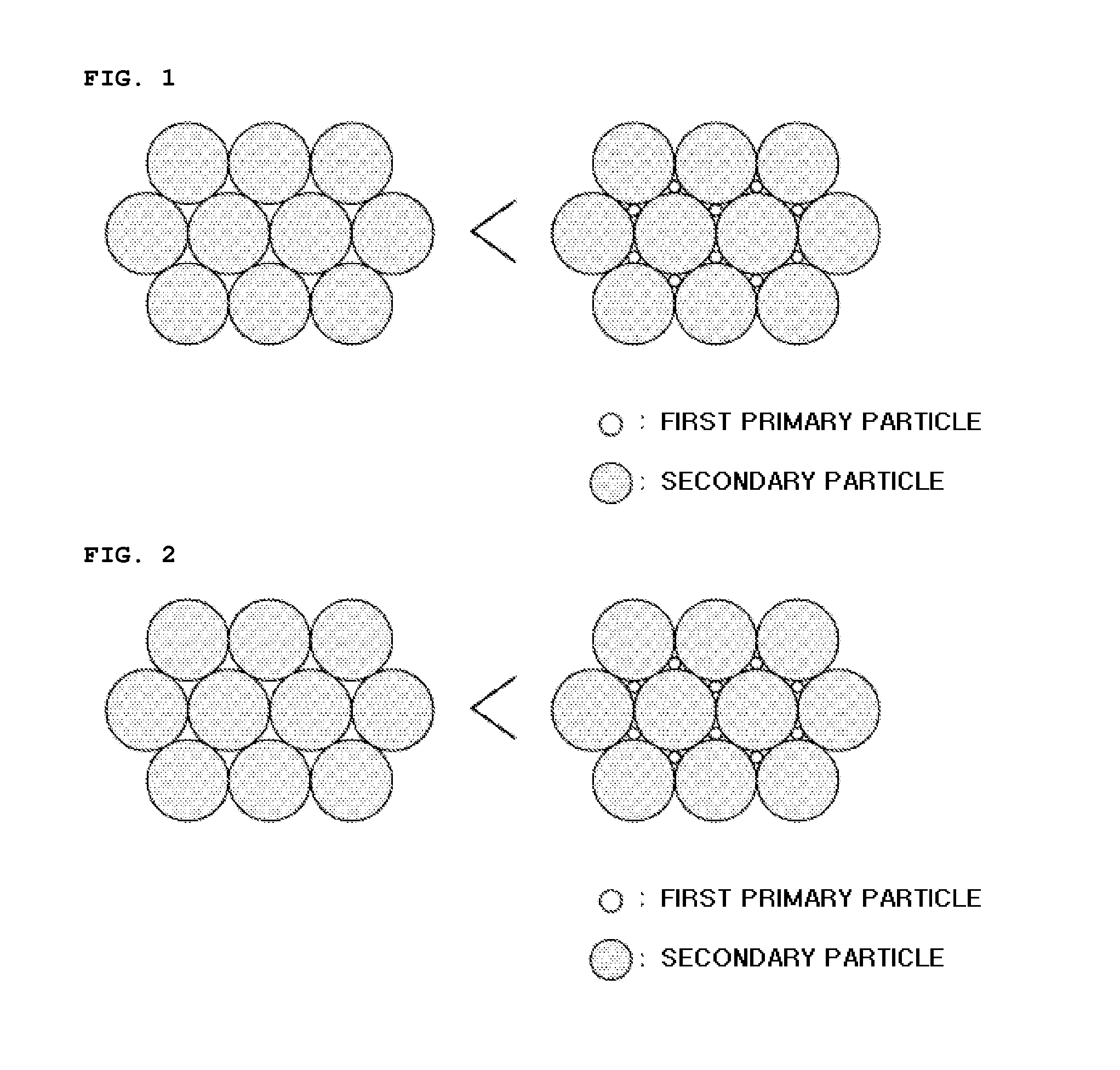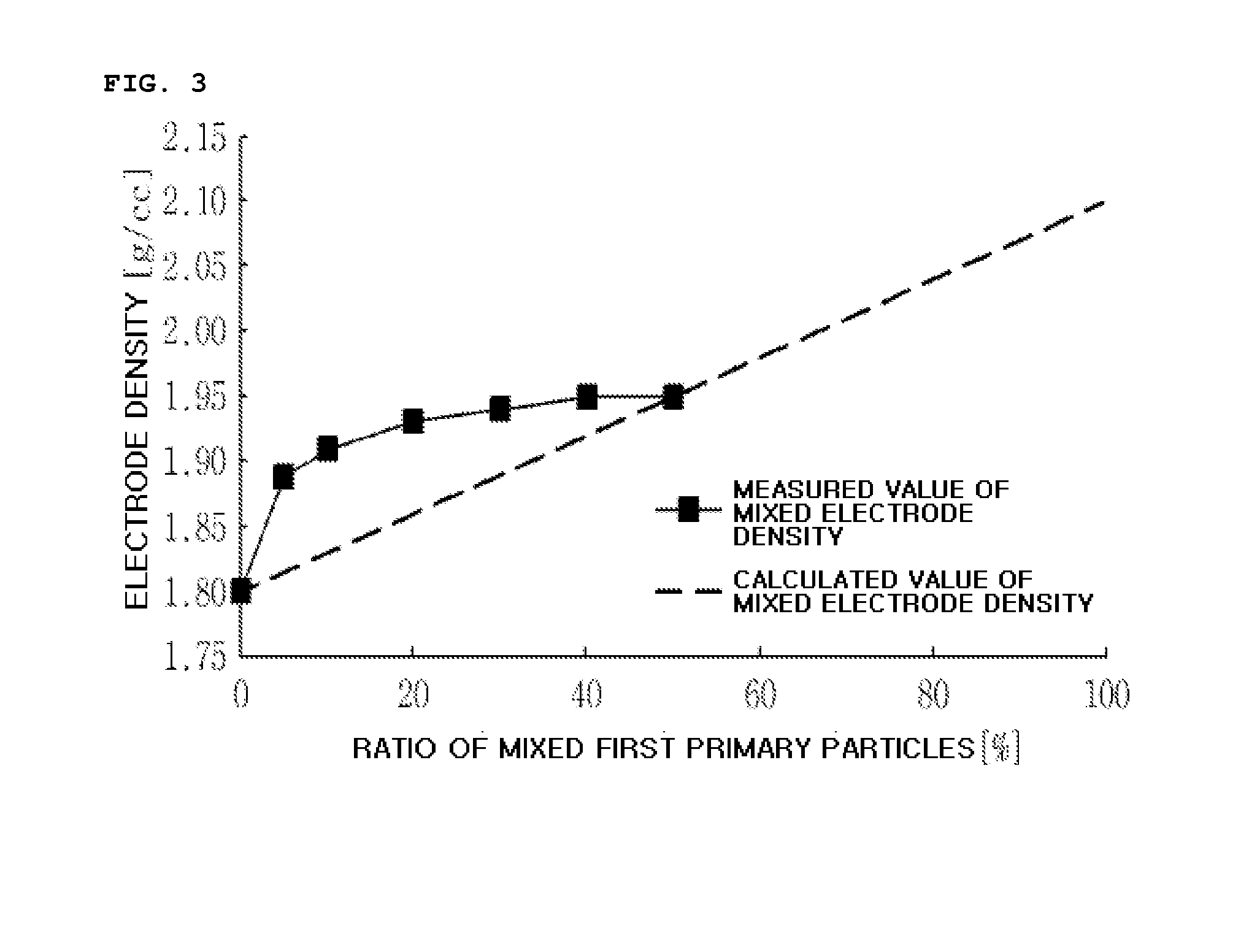Bimodal type anode active material and lithium secondary battery including the same
a lithium secondary battery, bimodal technology, applied in the direction of non-metal conductors, cell components, conductors, etc., can solve the problems of high irreversibility, high risk of explosion, crystalline carbon, etc., and achieve high rate capability and high density electrodes
- Summary
- Abstract
- Description
- Claims
- Application Information
AI Technical Summary
Benefits of technology
Problems solved by technology
Method used
Image
Examples
preparation example 1
Preparation of First Primary Particles
[0076]LiOH.H2O and TiO2 (anatase) were mixed at a molar ratio of 4:5. A mixture was dissolved in pure water, and a solution was then stirred and sintered at 750° C. for about 3 hours. First primary particles having an average particle diameter (D50) of 700 nm was prepared by grinding and sieving.
preparation example 2
Preparation of Secondary Particles
[0077]LiOH.H2O and TiO2 (anatase) were mixed at a molar ratio of 4:5. A mixture was dissolved in pure water and a solution was then stirred. In this case, a ratio of a total solid material was defined as a weight of a total solid content included in the solution to a total weight of the solution, and a precursor solution was prepared by adjusting the solid content to 30% and stirring. The precursor solution was provided into a chamber of a spray dryer (by EIN SYSTEMS, Co., Ltd.). Then, the precursor solution was sprayed in the chamber and dried. The spray drying were performed under conditions including a drying temperature of 130° C., an internal pressure of −20 mbar, and a feed rate of ml / min, and a Li4Ti5O12 secondary particles having an average particle diameter of 5.4 μm and an internal porosity of 3.5% was then prepared by sintering the precursor thus obtained at 800° C. in air.
example 1
[0078]The first primary particles and the secondary particles that were prepared in Preparation Examples 1 and 2 were mixed in a weight ratio of 5:95 by using a planetary mill to prepare an anode active material.
PUM
| Property | Measurement | Unit |
|---|---|---|
| Particle diameter | aaaaa | aaaaa |
| Particle diameter | aaaaa | aaaaa |
| Particle diameter | aaaaa | aaaaa |
Abstract
Description
Claims
Application Information
 Login to View More
Login to View More - R&D
- Intellectual Property
- Life Sciences
- Materials
- Tech Scout
- Unparalleled Data Quality
- Higher Quality Content
- 60% Fewer Hallucinations
Browse by: Latest US Patents, China's latest patents, Technical Efficacy Thesaurus, Application Domain, Technology Topic, Popular Technical Reports.
© 2025 PatSnap. All rights reserved.Legal|Privacy policy|Modern Slavery Act Transparency Statement|Sitemap|About US| Contact US: help@patsnap.com



